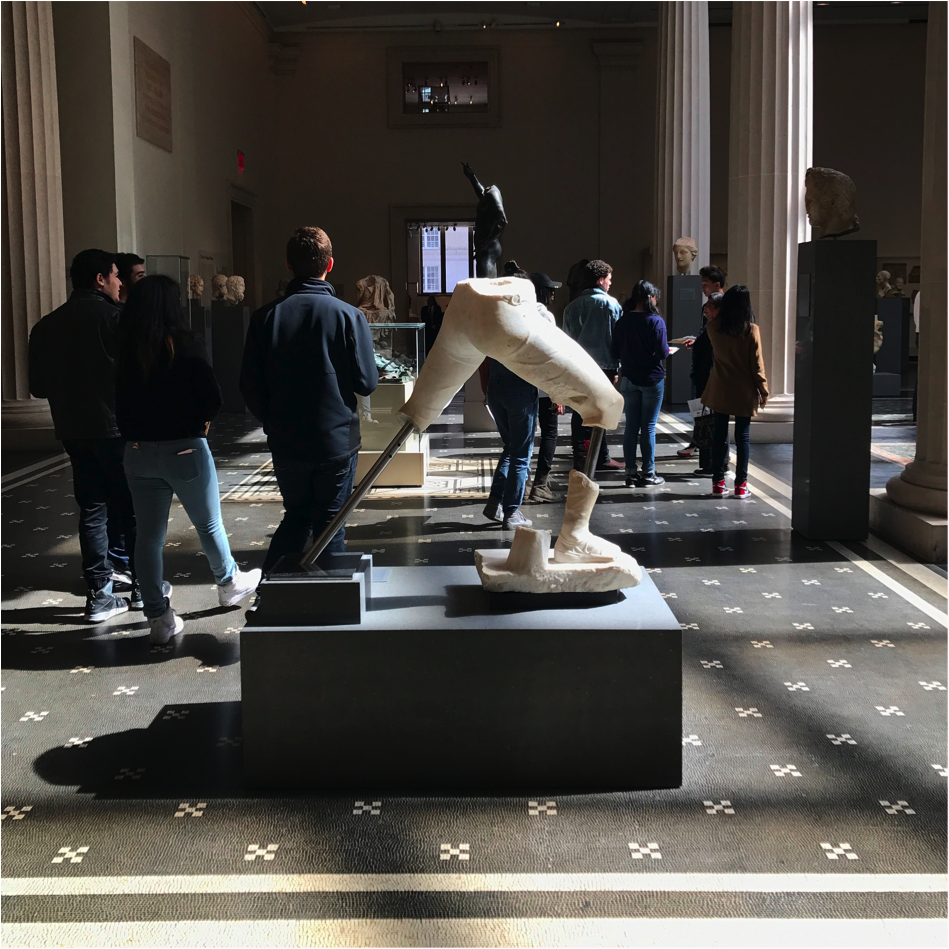
Have you ever craved an image like you wanted to eat it? This kind of craving isn’t quite for the object itself, but the feeling of your eyes at work with it. The memory of the sight alone isn’t enough. Maybe what you saw turned you on, or maybe it comforted you. Maybe it reminded you of someone, even though there was no concrete resemblance, just a stray jolt of recognition. For the past year, I’ve been monopolizing a bench in the Met’s sunny Roman sculpture court, where I can stare at a statue that’s missing everything from the waist up, and whose legs have been reassembled with metal poles. Although less than half of the statue’s body remains, I’ve been trying to resist the urge to put him back together, or to imagine the torso and face that have been gone for millennia. I’m pretending that this broken form is exactly how I am meant to see him. His severed waist shows a rough, grainy marble inside that contrasts against a smooth surface and carefully articulated details: wrinkles in his pants, tiny knots on his sandals, and a chain belt just below the break. If he were complete, I might not have noticed these things. I think I like him better broken, though I know him no other way.
Sometimes looking at art is like looking at a new love interest. It’s an attempt to find a balance between understanding the object (of affection, or art) for what it is, but also for what your own story brings to it, and how meaning grows between both of your realities. You try to be patient, let the object reveal itself at its own pace, and be careful not to project so much that you are blinded. I think about this broken statue when I’m not at the Met the way I think about a crush; he’s even the wallpaper on my phone. Sometimes I look at him so hard, that when I leave the museum, it’s as if I am seeing through a filter: broken-statue-tinted glasses. I see his shape everywhere: he’s in tree branches, a mannequin in a dumpster, a subway poster that someone has torn to cut the feet off of a model.
Before I put this warrior in places where he was never meant to be, let me tell you what I know: The Marble Statue of a Fighting Gaul, is what’s left of a statue of one Celtic soldier, who Romans faced on their borders during the late 3rd, or early 2nd century BC. Historians think that the original may have included a Roman opponent, standing in front of him on the same marble...
You have reached your article limit
Sign up for a digital subscription and continue reading all new issues, plus our entire archives, for just $1.50/month.
Already a subscriber? Sign in




